Modern Paris offers just a few clues for visualizing the city as it was in the Middle Ages. Always rich and vibrant, Paris was constantly being redesigned and rebuilt; the 100 little villages that have been absorbed into Paris have rarely retained even their 18th or 19th century street plan and major buildings. We weren't making any special effort to think about Medieval Paris on our recent trip; however, we saw a few medieval images.
In the Latin Quarter, little twisty streets just beyond the comparatively huge Boulevard Saint-Michel follow somewhat the same routes that they had in the Middle Ages, and retain some of the names. The very straight Rue Saint Jacques started on the other side of the Seine at the Tour Saint Jacques. Pilgrims began their walk to Saintiago de Campostello by taking this route.
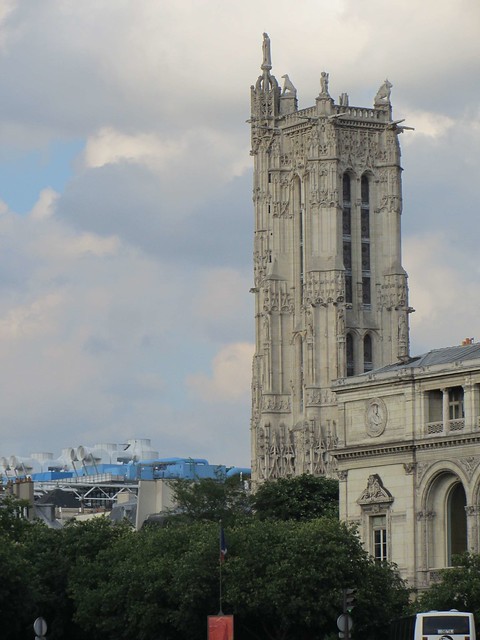 |
| The Tour Saint Jacques |
First the route from the Tour Saint Jacques crossed the Ile de la Cite, not far from Notre Dame cathedral, though in those days, the crowded buildings in front of the cathedral might have prevented them from getting the spectacular view that's now available. Not far from their route also was the Sainte Chapelle, or royal chapel, which was built in the 13th century for Louis IX. In its current state -- restored in the 19th century -- the Sainte Chapelle is extraordinary for the vivid colors of its nearly uninterrupted stained-glass windows.
 |
| The Sainte Chapelle |
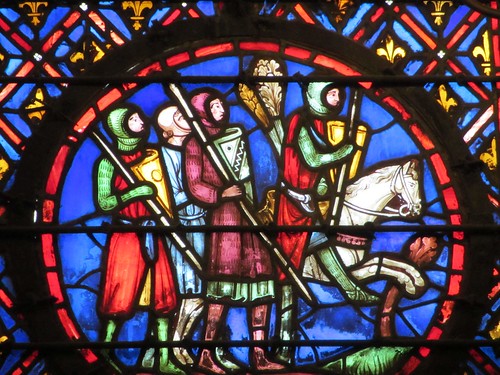 |
| Sainte Chapelle, detail of window |
After crossing from the Ile de la Cite, the pilgrims had to walk past the Jewish quarter of Paris, which was just across the Seine from Notre Dame. In the 19th century, one of many reconstructions of these old medieval areas uncovered the old Jewish cemetery, whose tombstones are now
in the Jewish Museum.
 |
Jewish Tombstone, 1281, excavated from the old Jewish Quarter 19th century,
image from the Jewish Museum Website |
The pilgrims' route from the river also passed quite near the old Roman baths, where eventually the powerful abbots of the Benedictine Cluny monastery (located a little north of Lyons) had their Paris headquarters. The abbots began the additions to the old Roman structures in the 14th century so that they would have a place to stay during visits to Paris for both political and social purposes. The building now contains the Musee de Cluny, always one of my favorite museums in Paris. Our visit earlier this month was disappointing because the most famous possession of the museum -- the Lady and the Unicorn tapestries -- are not currently on display, as their exhibit space and other parts of the museum are in reconstruction.
 |
| Filled-in Roman arches at the Cluny Museum |
The Cluny Museum, even minus the unicorn tapestries, is fantastically rich in sculpture, ivories, stained glass, metalwork, wood carvings, manuscripts, and other tapestries. It contains original stonework from Paris monuments that provide interesting insights into how the originals may have looked before the Revolutionary mobs of 1789 and just afterwards attacked the buildings, and before the 19th century restorers imposed their visions on churches such as Saint-Germain des Pres, which wasn't on the pilgrims' route, but wasn't far from it.
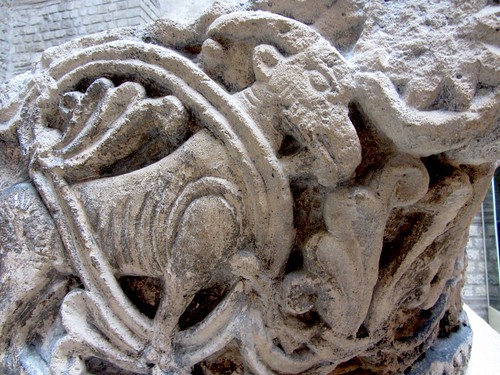 |
| Capital from the church of Saint Germain des Pres, Cluny Museum |
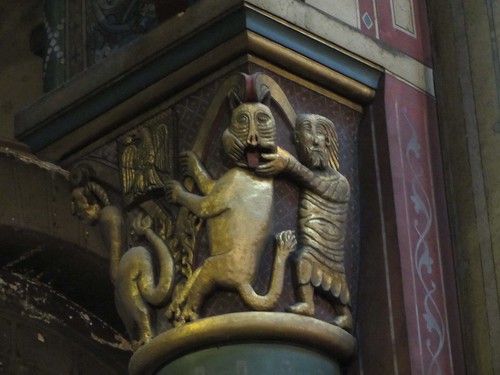 |
| Capital in Saint Germain des Pres, repainted (maybe reconstructed) in the 19th century |
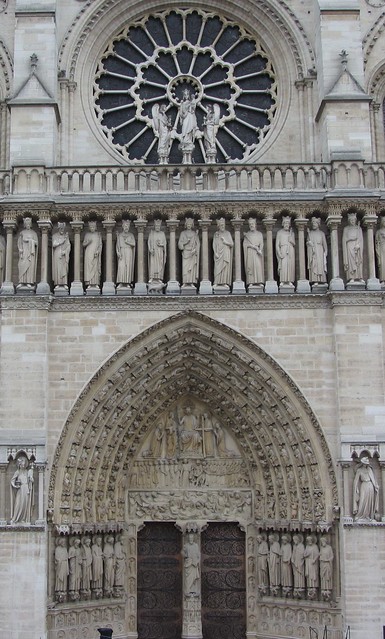 |
Notre Dame Cathedral -- gallery of kings, reconstructed in the 19th century
after destruction during the French Revolution |
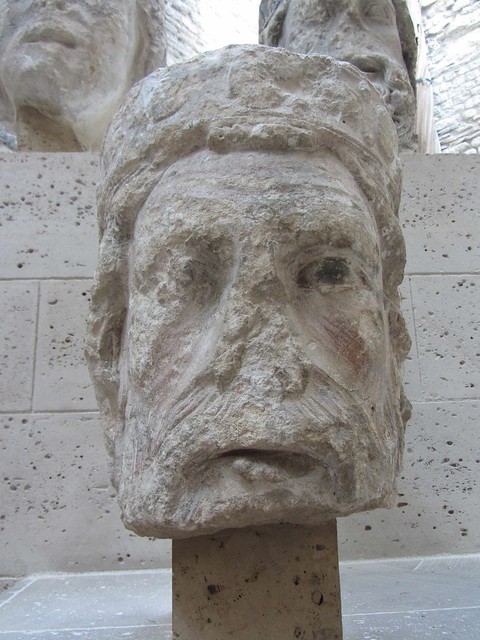 |
| Cluny Museum: original head of a king from Notre Dame, discovered during excavations in the 1970s. |
Seeing medieval art in Paris today also requires a visit to the Louvre, which also has a very large collection of medieval art. We enjoyed huge rooms full of beautiful tapestries, some of which used to be displayed at the Cluny Museum before one of the enormous expansions of the Louvre's space. There are many other opportunities to see traces of the Middle Ages in Paris, and several other museums with various collections of medieval works. It's impossible to grasp the riches of Paris!









1 comment:
this may be one of my favorites of your Paris posts because not only am I familiar with all the spots, but they are some of my favorites. Clearly Ste. Chappele is my favorite church because of those magnificent windows, and Cluny is hands-down the best museum in Paris! Loved every bit!
Post a Comment